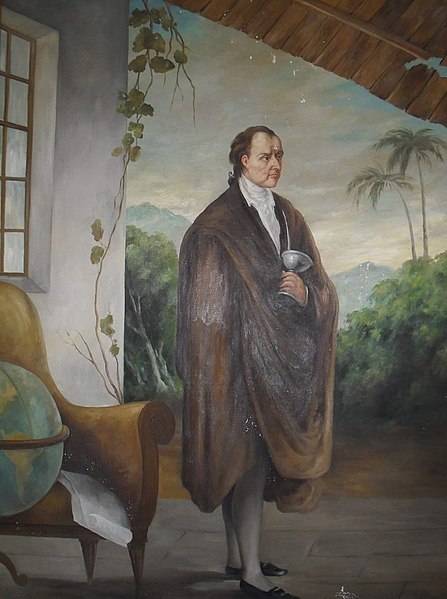The General in His Labyrinth
The General in His Labyrinth is a 1989 dictator novel by Colombian writer and Nobel laureate Gabriel García Márquez. It is a fictionalized account of the last seven months of Simón Bolívar, liberator and leader of Gran Colombia. The book traces Bolívar's final journey from Bogotá to the Caribbean coastline of Colombia in his attempt to leave South America for exile in Europe. Breaking with the traditional heroic portrayal of Bolívar El Libertador, García Márquez depicts a pathetic protagonist, a prematurely aged man who is physically ill and mentally exhausted. The story explores the labyrinth of Bolívar's life through the narrative of his memories, in which "despair, sickness, and death inevitably win out over love, health, and life".
First edition (Colombian)
Simón Bolívar painted in 1825 by José Gil de Castro
Memorial to Simón Bolívar at the Quinta de San Pedro Alejandrino just outside Santa Marta, Colombia. The final pages of The General in His Labyrinth are set in Santa Marta.
The dictator novel is a genre of Latin American literature that challenges the role of the dictator in Latin American society. The theme of caudillismo—the régime of a charismatic caudillo, a political strongman—is addressed by examining the relationships between power, dictatorship, and writing. Moreover, a dictator novel often is an allegory for the role of the writer in a Latin American society. Although mostly associated with the Latin American Boom of the 1960s and 1970s, the dictator-novel genre has its roots in the nineteenth-century non-fiction work Facundo (1845), by Domingo Faustino Sarmiento.
Juan Manuel de Rosas, 19th-century Argentine dictator, by Cayetano Descalzi.
Nineteenth-century Paraguayan dictator José Gaspar Rodríguez de Francia holding a traditional yerba mate gourd. Dr. Francia's autocratic rule was immortalized in Augusto Roa Bastos' I, the Supreme (1974).





